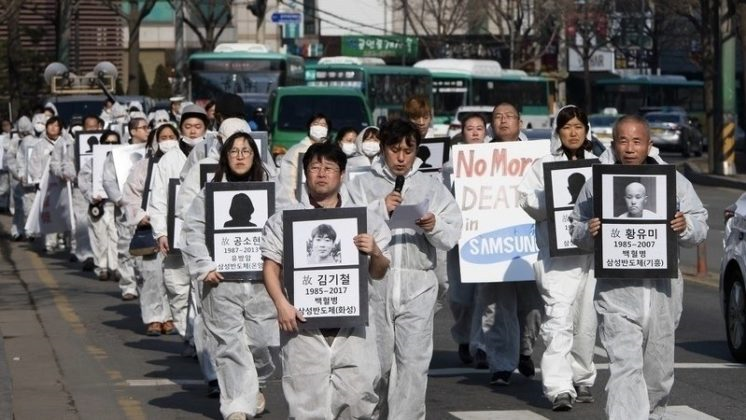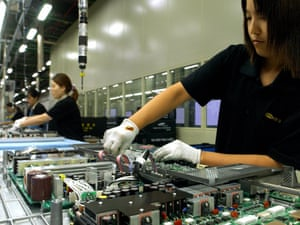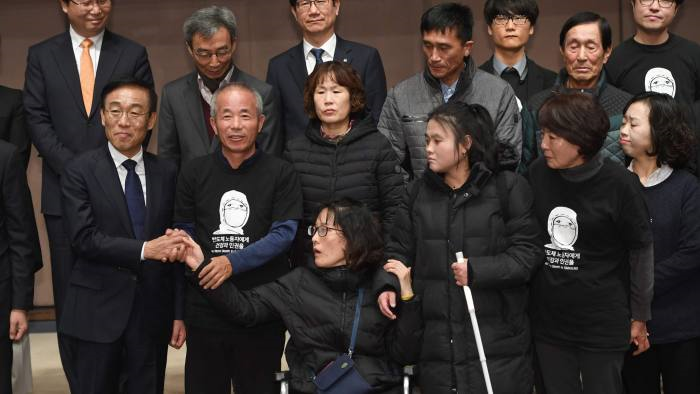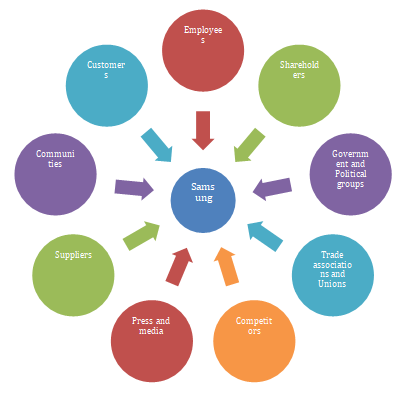Analysis On Samsung Corporate Social Responsibility Issues
Question
Task:
Select ONE organisation that has been publicly identified (for example by the press or by an Non-Governmental Organisation (NGO)) as having weak corporate social responsibility (CSR) practices anytime between 2016 and 2020.
a) Critically evaluate the CSR practices of your selected organisation in light of appropriate theories and stakeholder models
Your evaluation should include:
- an assessment of the origins of the problem(s), detailing what happened and why;
- an assessment of the organisation’s response to the problem (s), using relevant stakeholder model(s), and;
- the impact of the CSR failure on the organisation’s key stakeholders, using relevant stakeholder models.
b) Prepare a presentation that illustrates the findings from your research
You will be expected to demonstrate research using a variety of sources including corporate documentation and news articles in addition to a reliance on high-quality sources (i.e. peer-reviewed academic journals and seminal texts). Please use the literature appropriately and reference all sources fully using the Harvard referencing system. Given that this is a 2,500 word assignment, you are expected to use a minimum of 12 high-quality sources (including the suggested readings) for this coursework.
Answer
Abstract
In this report, a detailed analysis of the Samsung has been carried out based on Samsung corporate social responsibility practices and significant issues behind it. It has been analysed that the firm is being criticised since the business year 2007 for poor labour conditions, inadequate workplace health and safety regulations, and chemical exposure which has affected the workforce working its factories as well as affecting the environment. By the year 2018, 319 victims and 117 death have been accounted for due to poor CSR initiatives and unsustainable labour conditions of the firm. Additionally, the firm is neglecting such fact but due to political, community, legislations, and press media pressure, the firm has apologised in public and promised to compensate the victims and their families. Through the stakeholder management approach, the impact of the failure of Samsung corporate social responsibility practices on the key stakeholders of the firm has been also analysed in a detailed manner.
Introduction
The present report sheds light on the Samsung corporate social responsibility issues. The business environment in the contemporary era has become complex which requires organisations to integrate informed corporate social responsibility practices for being socially accountable. On the contrary, there is no 'right' way which depicts regulations of businesses for practicing CSR but the CSR initiatives strive to positively contribute to the environment, public, and economy. In this report, the Samsung has been selected for having weak Samsung corporate social responsibility (CSR) practices within its labor practices due to poor workplace safety management. It has been identified that the organisation Samsung has been publicly criticised by the press and media for having 'unsustainable labor practices' which not only highlights poor CSR practices but also reveals violations to the community and society at an extensive rate. The use of stakeholder mapping and the matrix has been also highlighted for analysing the interests and influence of each stakeholder about the Samsung corporate social responsibility issue. Furthermore, this report discusses the failure of Samsung corporate social responsibility practices based on unsustainable labor practices in a detailed manner, offering deep insights and knowledge in this particular area.
Origin of the problem
Based on Carroll's pyramid of corporate social responsibility, it has been identified that every organisation has philanthropic, ethical, legal, and economic responsibilities. Specifically, ethical responsibilities highlight the obligations of organisations to do right and fair by eliminating any harm to the workforces, stakeholders, community, environment, and society. Likewise, the ethical responsibilities of corporate social reasonability are highly concerning based on the rising events of poor labor work conditions and poor workplace safety of workers. It has been well highlighted by (Bbc.com, 2018), Samsung has been criticised since the business year 2007 for poor working conditions at South Korean factories to both workers hired by Samsung via sub-contractors and employed by Samsung.
In the business year 1984, there were several workers at South Korea chip factories who were helpless to go against the company irrespective of their deteriorating health conditions due to chemical and toxin exposer. Besides that, it has been accounted that by the business year 2018, 319 victims and 117 death has occurred due to lack of safety management practices and appropriate working conditions for workers, (Bbc.com, 2018).
Scenario (what happened)

Fig: 1 (International Day of Action Against Samsung)
Source: (Goodelectronics.org, 2018)
The initiation of the problem started in Seoul, South Korea where several workers have reportedly developed leukaemia, brain tumours, cancer, and other afflictions due to potential health risks at Samsung factory, (Kennedy, 2018). The first case was identified in the business year 2007, Yu-mi, one of the factory workers at Samsung contracted with leukaemia due to improper management of potential health risks at liquid-crystal display production lines and its chip factories. Gradually, by the year 2019, an investigative new reporter at Korea, stated that the company has not been effective in its Samsung corporate social responsibility practices even after several deaths and illness of factory workers, highlighting unsustainable labor practices, (Business-humanrights.org, 2019). Furthermore, it has been also alleged that Samsung is also violating labor rights including exploitation, health and safety concerns, worker deaths, and poor wages.
In the business year 2012, the company was criticised for using child labor at its factory in China, (Arthur, 2015). This was a very strong allegation towards the company Samsung as it not only impacted its ethical considerations but also its social considerations. It certainly affected its growth and sustainability in the long-term.
The reason behind the problem (Why)
Based on Fig: 2, (Arthur, 2015) highlighted that the annual report of Samsung reveals breaches of safety equipment discipline and provision as well as working time. An audit conducted by the Chinese suppliers revealed that multiple infringements of working practices at Samsung factory, South Korea.

Fig: 2 (Poor workplace safety for workers)
Source: (Arthur, 2015)
In the year 2013, it has been identified that the reason behind such an incident is the failure to provide safety gear to the workers as well as excessive working hours where the workers are vigorously exposed to chemicals. Specifically, the Chinese suppliers of Samsung have been criticised for ethical and social dilemmas. The audit also highlighted that suppliers of Samsung had excessively dusty and noisy workplaces that do not concern with water and air pollution, (Andrecka, 2017, p. 333). Furthermore, in the year 2014, the company was also criticised for illicit and inhumane working conditions, specifically within the supplier’s factories. On the other hand, (Evermann, 2014) revealed that civil society organisations stated that there are several labor issues due to ineffective Samsung corporate social responsibility practices including exposure to toxic chemicals, discriminatory and humiliating treatment of workers. This, in turn, highlights significant issues within its Samsung corporate social responsibility practices and initiatives.
Timeline of events
|
Year |
Event |
|
1984 |
Workers suffered and suffering from harmful chemical or toxin exposure at the chip factories at South Korea can claim compensation, (Bbc.com, 2018) |
|
2007 |
Compensation campaign began by Mr. Hwang, after the death of her daughter due to leukemia which developed because of the poor working conditions and chemical exposure, (Bbc.com, 2018) |
|
2012 |
Faced allegations about using child labors in China, (Arthur, 2015) |
|
2013 |
No consideration about workplace health and safety including lack of protective goggles, masks and safety equipment, Air and water pollution, (Arthur, 2015) |
|
2014 |
Working conditions of Samsung suppliers were inhumane and illicit working hours, (Arthur, 2015) |
|
2018 |
Death of 117 workers and 319 victims suffering from cancer or other illness due to occupational illnesses and on-the-job chemical exposure, (Bbc.com, 2018) |
Table: 1 (Occurrence of events highlighting CSR failure at Samsung)
Organisation’s response to the problem
Concerning the stakeholder primacy business model of Samsung corporate social responsibility practices, the pursuit of business is to maintain and generate value for which each stakeholder must collaboratively contribute. It has been put forward by (Mali, 2019) that as a response to the problem and after 10 years of legal battle, Samsung has apologised to the workers who caught cancer and other illness after working at the semiconductor factories and promised to enhance its Samsung corporate social responsibility practices and labor conditions, as it values its every stakeholder. The organisation has also forwarded a statement that it will pay around 150 million won per case that includes workers suffering from 16 types of cancer and other illnesses, in the business year 2018.

Fig: 3 (Samsung's initiative towards poor labour practices)
Source: (Jung, 2018)
This compensation scheme of Samsung has been also offered in concern with the workers or their children working at Samsung workplaces in the year 1984, (Bbc.com, 2018). However, the company’s response during that time was vague. Likewise, the company did not agree with the matter and rejected the allegations in the year 2007, the case of Mr. Hwang’s daughter. The child labor issue and extended working time were also highlighted in the years 2013 and 2014 which Samsung agreed and promised to comply with effective policies. However, such measures critically failed after the number of deaths and victims increased by the year 2018. Hence, it can be stated that the Samsung corporate social responsibility issues have been a long-standing problem that the company refused to comply with and also made vague promises to the workers, community, and society at large.
However, in the business year 2018, each representative and shareholders of the company agreed to compensate and apologise publicly to the workers which were a part of the settlement, (Jeong, 2018). On the other hand, (Baron, 2018, p. 86) argued that Kantian ethics and stakeholder theory highlights that management is responsible for the impact of their actions on others. However, during the interests’ conflict, the decisions must be made considering each stakeholder of the organisation without violating the rights of the stakeholders. Besides that, the normative stakeholder’s management model of business highlights that every organisation must consider the interests and needs of the stakeholders by employing standards practices and contribute to the society based on moral rules. (Liangand Renneboog, 2017, p. 901). Similarly, The company has to comprehend the interests and needs of its workforce by employing significant Samsung corporate social responsibility initiatives that support workplace safety and health conditions at an elevated level.
As Samsung integrated mediation for settling the labor violation dispute, it significantly identified several signs of conflict, (Bbc.com, 2018). Based on the four distinct stages of stakeholder's controversies including social expectations and awareness, political awareness, legislative engagement, and social control and litigation, the company has been at a centre point representing each issue in its Samsung corporate social responsibility practices for managing labor conditions. It has been well highlighted by (Solidar.ch, 2016) that Samsung argued of having the best level of safety in the product line of the semiconductor factories. However, investigations by the government on the risks and hazards of the factories have not been disclosed by the organisation. This highlights concealment and manipulation of information of the workplace which is concerning based on ethical and social grounds.
Timeline of events
|
Year |
Event |
|
1984 |
The agreement does not confirm occupational disease at Samsung workplaces but workers affected or died due to the cause can gain 150m won (£103,207) per illness as per the present scenario, (Bbc.com, 2018) |
|
2007 |
Did not consider the matter and rejected the allegations, (Bbc.com, 2018) |
|
2012 |
Samsung vowed to eliminate overtime and use of child labors by the year 2014, (Arthur, 2015) |
|
2013 |
Samsung confirmed working beyond legal hours by the Chinese workers. It also highlighted that it would maintain ethical standards in business operations, (Arthur, 2015) |
|
2014 |
Promised to develop the working conditions and comply with working hours, (Arthur, 2015) |
|
2018 |
Mediation settlement; A public apology by Samsung and compensation, (Bbc.com, 2018) |
Table 2 (Response of Samsung towards the ethical issue)
Stakeholder mapping in action
In Fig: 4, the key stakeholders of Samsung have been highlighted as they have significant interest and influence on the company’s sustainability and growth in the market. Furthermore, stakeholder mapping can assist to highlight the substantial influence of potential stakeholders based on the Samsung corporate social responsibility issue.

Fig: 4 (Stakeholder mapping of Samsung)
Based on the stakeholder map highlighted by (Kloosterman, 2020), the matrix enables to map of stakeholders of a company based on their interest and influence. This in turn assist to analyse the level of involvement of each stakeholder with the company. Furthermore, the type of engagement can be also identified through the matrix. Based on this matrix (Fig: 5) and stakeholder mapping (Fig: 4), the influence of Samsung corporate social responsibility failure on the key stakeholders of the company can be accessed explicitly. This in turn can assist to analyse the impact of the Samsung corporate social responsibility failure on the stakeholders which has been discussed in the next section.
|
High |
Competitors |
Shareholders |
|
Suppliers |
Customers |
|
|
Low Influence of stakeholder High |
||
Fig: 5 (Stakeholder matrix for Samsung based on CSR failure and its influence)
Source: (Kloosterman, 2020)
In relation to Fig: 5, the stakeholder matrix highlights that the strategies and business tactics of the competitors have to be analysed specifically due to the rise of the issue. Their influence on the firm is limited but their interest in damaging the reputation and brand image of Samsung by attracting the customer base is relatively high. On the other hand, the suppliers have very minimal contact with the firm, hence, their interests and influence are very limited in this case as the company has to develop Samsung corporate social responsibility policies to enhance the working conditions of the sub-contractor factories.
Other than that, the shareholders, employees, communities as well as trade associations and Unions have a substantial interest in the practices and operations of Samsung. The Samsung corporate social responsibility failure has a significant impact on these stakeholders of the company which reflects their explicit influence on the company to enhance its policies and initiatives. The interests of customers, government, and political groups as well as press and media are limited, however, their interests critically grow with the issues and complications of the firm which is similar in this case. It is expected that their interests would grow simultaneously with the ethical and social dilemmas faced by Samsung. This in turn would result in a higher influence on the company’s growth, success, and competitive edge in the market, (Yakovleva, 2017, p. 71). Hence, it is essential for Samsung to comprehend the interests of each stakeholder and should not take them lightly as each stakeholder have a significant influence on the firm’s capabilities and business operations in the global business environment.
What is the impact of the Samsung corporate social responsibility failure on the organisation’s key stakeholders?
Based on the strategic approach to stakeholder management, Freeman in the business year 1984 highlighted the significance of potential stakeholders associated with a firm, (Freeman and Dmytriyev, 2017, p. 11). Likewise, the Samsung corporate social responsibility failure within the labour practices of the selected company has a significant impact on the key stakeholders of the organisation, highlighted in the below table.
|
Stakeholder |
Impact |
|
Shareholders |
· Being the owner of the organization, investment and funding is a huge risk; · Loss of finances in the market; · Potential possibilities to lose important shareholders affecting the business, (Cramer, 2017, p. 32). |
|
Employees |
· Lack of workplace satisfaction; · Lower willingness to work with the firm; · Minimal coordination with the organization’s values and responsibilities. |
|
Customers |
· Poor reputation in the market; · Increasing concern about Samsung corporate social responsibility activities of firms; · Choosing different brands over Samsung. |
|
Suppliers |
· Loss of contracts with potential suppliers; · Increasing the bargaining power of suppliers. |
|
Communities |
· Lack of support from local communities; · Affecting the brand image due to strikes and public humiliation. |
|
Trade associations and Unions |
· Increasing power and pressure over the firm; · Development of new rules and labor strikes; · Higher compensation rates. |
|
Government and Political groups |
· The increased pressure of the firm’s CSR initiatives; · Lack of appropriate funding, (Ferreira and Ribeiro, 2017, p. 70); · Strong tax and legislative regulations. |
|
Press and media |
· A negative review of the brand; · Increasing aggression of the general public; · Negative comments and influence on the brand. |
|
Competitors |
· Gaining potential customers of Samsung; · Increasing customer base and higher rivalry; · Threats of new entrants to capture the market, (Yawar and Seuring, 2017, p. 641). |
Table: 3 (Impact of CSR failure on Samsung’s stakeholder)
Based on the stakeholder salience model proposed by (Mitchelland Agle, 1997, p. 719), it has been comprehended that the employees, political entities, press, and communities have shown legitimacy in the case of poor working conditions and unsustainable labor practices at Samsung. Additionally, urgency has been also shown from the stakeholders to manage the situation which led to the compensation and public apology by the organisation in public (Friedman and Miles, 2006). Hence, stakeholders of a firm must be the top priority for enhancing business functions and gain a competitive edge, (Jackson et al. 2018, p. 6).
Based on the Clarkson Centre for Business Ethics, 1999 stakeholder management principles, it has been well stated by (Flammer and Luo, 2017, p. 181) that decision making and open communication are the major principles that can act as a means towards best interests of legitimate stakeholders. However, the seven principles of stakeholder management are highly essential to integrate into its core business practice for enhancing Samsung corporate social responsibility practices.
The seven principles including decision-making, communication, adopt the behaviour, fair distribution, work cooperatively, comply with human rights and acknowledge potential conflicts have to be integrated explicitly for developing Samsung corporate social responsibility practices concerning its labor conditions and workplace health and safety. Other than just compensating for the victims and their families, it is essential to enhance Samsung corporate social responsibility initiatives by offering a healthy workplace environment, safety equipment, and complies with environmental regulations, (Liu and Zhang, 2017, p. 1083). This, in turn, can ensure effective management of the workforce and success of CSR practices in the long-term.
Conclusion
In conclusion, it can be stated that the chosen company has been criticised for its immoral behaviour and poor Samsung corporate social responsibility practices causing the safety and health problems of several workers who are working in its factories. Additionally, the response of Samsung towards the death and illness of workers is based on compensation and apologised to the public explicitly. However, such a response is only for the short-term as Samsung refuses that its work environment is poor and unhealthy for workers due to chemical exposure and air pollution. Irrespective of several media actions and public allegations, the organisation have not been focusing on Samsung corporate social responsibility practices as in the business year 2018, around 319 victims and 17 deaths have been accounted for poor working conditions and lack of safety equipment. Ineffectiveness of Samsung corporate social responsibility practices critically impacted the key stakeholders of the organisation resulting in poor brand image and reputation in the global market.
References
Andrecka, M., 2017. Corporate social responsibility and sustainability in Danish public procurement. Eur. Procurement & Pub. Private Partnership L. Rev., 12, p.333.
Arthur, C., 2015. Samsung Finds Labour Violations At Dozens Of Its Chinese Suppliers. [online] the Guardian. Samsung corporate social responsibility Available at: <https://www.theguardian.com/technology/2014/jul/01/samsung-working-practice-breaches-chinese-suppliers> [Accessed 6 July 2020].
Baron, M.W., 2018. Kantian ethics almost without apology. Cornell University Press.
Bbc.com. 2018. BBC News. Samsung Agrees Payouts After Worker Deaths. [online] Available at: <https://www.bbc.com/news/technology-46060376> [Accessed 6 July 2020].
Bbc.com. 2018. BBC News. Samsung Apologises To Sick Workers. [online] Available at: <https://www.bbc.com/news/technology-46315739> [Accessed 6 July 2020].
Business-humanrights.org. 2019. Samsung Accused Of 'Unsustainable Labour Practices' In Its Supply Chain; Incl. Co. Statement | Business & Human Rights Resource Centre. [online] Available at: <https://www.business-humanrights.org/en/samsung-accused-of-unsustainable-labour-practices-in-its-supply-chain-incl-co-statement> [Accessed 7 July 2020].
Cramer, J., 2017. Corporate Social Responsibility and Globalisation: an action plan for business. Routledge.
Evermann, A., 2014. [online] Electronicswatch.org. Available at: <https://electronicswatch.org/the-ict-sector-in-the-spotlight_723519.pdf> [Accessed 7 July 2020].
Ferreira, A.I. and Ribeiro, I., 2017. Are you willing to pay the price? The impact of corporate social (ir) responsibility on consumer behavior towards national and foreign brands. Samsung corporate social responsibility Journal of Consumer Behaviour, 16(1), pp.63-71.
Flammer, C. and Luo, J., 2017. Corporate social responsibility as an employee governance tool: Evidence from a quasi?experiment. Strategic Management Journal, 38(2), pp.163-183.
Freeman, R.E. and Dmytriyev, S., 2017. Corporate social responsibility and stakeholder theory: Learning from each other. Symphonya. Emerging Issues in Management, (1), pp.7-15.
Friedman, A.L. and Miles, S. (2006) Stakeholders: Theory and Practice, Oxford University Press: Oxford.
Goodelectronics.org. 2018. GoodElectronics. Global Day Of Action Against Samsung. Join The Call To Action! - Goodelectronics. [online] Available at: <https://goodelectronics.org/global-day-action-samsung/> [Accessed 7 July 2020].
Jackson, G., Doellgast, V. and Baccaro, L., 2018. Corporate social responsibility and labour standards: Bridging business management and employment relations perspectives. British Journal of Industrial Relations, 56(1), pp.3-13.
Jeong, E., 2018. Samsung Agrees To Compensation Deal Over Chip Worker Deaths, Illnesses. [online] WSJ. Samsung corporate social responsibility Available at: <https://www.wsj.com/articles/samsung-agrees-to-compensation-deal-over-chip-worker-deaths-illnesses-1532430877> [Accessed 7 July 2020].
Jung, S., 2018. Samsung Finally Apologises To Workers Struck Down By Disease. [online] Ft.com. Available at: <https://www.ft.com/content/2b57424e-eedc-11e8-89c8-d36339d835c0> [Accessed 7 July 2020].
Kennedy, M., 2018. NPR Choice Page. [online] Npr.org. Available at: <https://www.npr.org/2018/11/23/670429271/samsung-apologizes-to-ill-workers-promises-to-compensate-them> [Accessed 6 July 2020].
Kloosterman, V., 2020. What Is Stakeholder Analysis And Mapping And How Do You Do It Effectively?. [online] Smartsheet. Available at: <https://www.smartsheet.com/what-stakeholder-analysis-and-mapping-and-how-do-you-do-it-effectively> [Accessed 16 July 2020].
Liang, H. and Renneboog, L., 2017. On the foundations of corporate social responsibility. The Journal of Finance, 72(2), pp.853-910.
Liu, X. and Zhang, C., 2017. Corporate governance, social responsibility information disclosure, and enterprise value in China. Journal of Cleaner Production, 142, pp.1075-1084.
Mali, K., 2019. Samsung Apologies To Factory Workers In Cancer Case. [online] TechGraph. Available at: <https://techgraph.co/inside/samsung-apologies-to-factory-workers-in-cancer-case/> [Accessed 7 July 2020].
Mitchell, R.K. and Agle, B.R., 1997, July. Stakeholder identification and salience: Dialogue and operationalization. Samsung corporate social responsibility In Proceedings of the International Association for Business and Society (Vol. 8, pp. 717-727).
Solidar.ch. 2016. Human Rights Violationsby Transnational Corporations: Mismanagement Of Hazardous Substances. [online] Available at: <https://www.solidar.ch/sites/default/files/toxic_substances_voices_from_ne_asia_2016_final.pdf> [Accessed 7 July 2020].
Yakovleva, N., 2017. Corporate social responsibility in the mining industries. Routledge.
Yawar, S.A. and Seuring, S., 2017. Management of social issues in supply chains: a literature review exploring social issues, actions and performance outcomes. Journal of Business Ethics, 141(3), pp.621-643.












